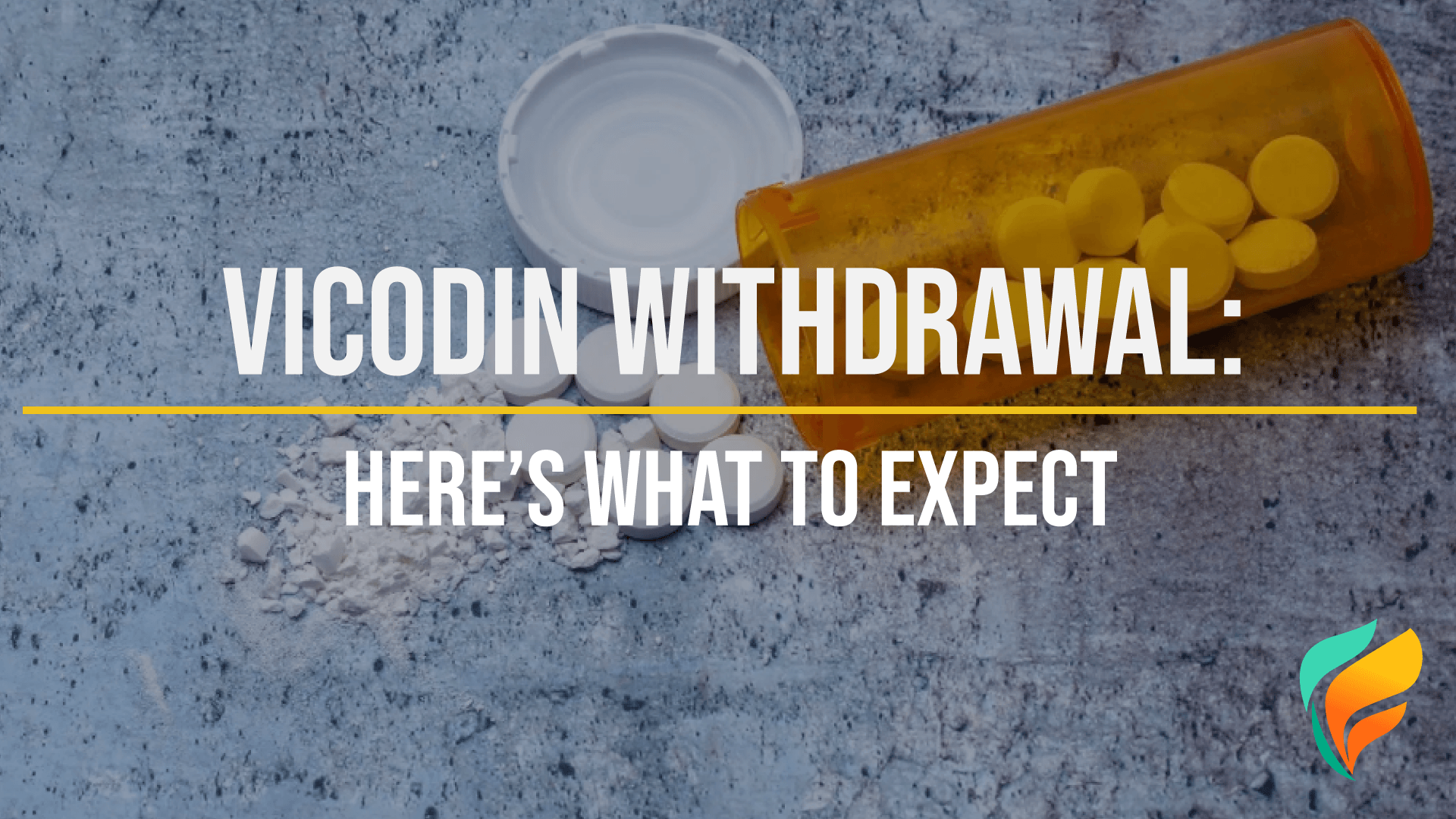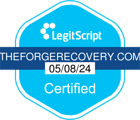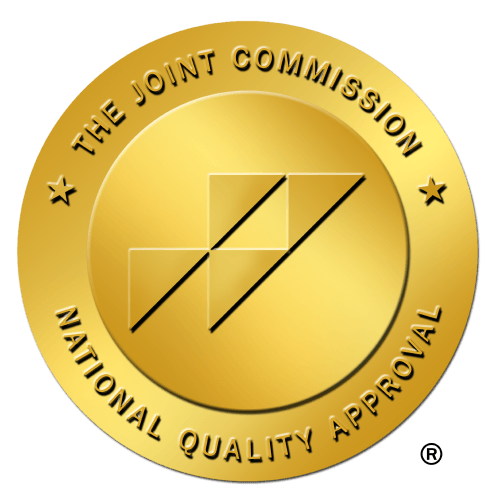Vicodin Withdrawal: Symptoms, Timeline & More About Withdrawing From Vicodin


Vicodin withdrawal isn't easy...but with the right help, you can get through it safely...even comfortably. Learn more in our blog.
Vicodin, a widely prescribed painkiller, combines hydrocodone and acetaminophen to alleviate moderate to severe pain. While effective, its potential for addiction is high, leading many individuals to struggle with dependency and opioid addiction.
Understanding the withdrawal symptoms and timeline is crucial for those looking to reclaim their lives from Vicodin addiction.
Understanding Vicodin Addiction
Vicodin is a prescription painkiller composed of hydrocodone, an opioid, and acetaminophen, a non-opioid pain reliever. This combination is designed to treat moderate to severe pain, often prescribed after surgeries or injuries, or for chronic pain conditions. Hydrocodone works by binding to opioid receptors in the brain to reduce the perception of pain, while acetaminophen helps to alleviate pain and reduce fever.
How Does Vicodin Lead to Addiction?
Vicodin’s effectiveness in pain management stems from hydrocodone's impact on the brain's reward system, releasing dopamine and creating a sense of euphoria. This can lead to dependency as the brain begins to rely on the drug to release these feel-good chemicals. Over time, higher doses are needed to achieve the same effects, increasing the risk of addiction.
Signs of Vicodin addiction include taking larger doses than prescribed, frequent requests for refills, and using the drug for non-medical reasons. Physical symptoms might involve drowsiness, confusion, and slowed breathing, while psychological signs include cravings, anxiety, and depression.
Vicodin Withdrawal Symptoms
Withdrawing from Vicodin can be a challenging and distressing process, marked by a range of physical and psychological symptoms. Understanding these opioid withdrawal symptoms can help prepare you for the journey ahead and underscore the importance of seeking professional support.
Physical Symptoms of Vicodin Withdrawal
Nausea and Vomiting: One of the most common physical withdrawal symptoms, often leading to dehydration and weakness.
Muscle Aches and Cramps: Painful sensations in the muscles, similar to severe flu symptoms.
Sweating and Chills: Sudden bouts of sweating followed by chills are typical during withdrawal.
Increased Heart Rate and Blood Pressure: Withdrawal can cause your heart rate and blood pressure to spike, leading to discomfort and anxiety.
Psychological Symptoms of Vicodin Withdrawal
Anxiety and Irritability: Increased anxiety and irritability are common as the brain readjusts to the absence of hydrocodone.
Depression: Feelings of sadness and hopelessness can be intense during withdrawal.
Insomnia and Sleep Disturbances: Difficulty falling or staying asleep can exacerbate other withdrawal symptoms.
Cravings for the Drug: Strong urges to use Vicodin again can be a significant challenge during withdrawal.
Duration and Intensity of Vicodin Withdrawal Symptoms
The severity and duration of withdrawal symptoms can vary based on several factors:
Duration of Use: Long-term users may experience more severe symptoms.
Dosage: Higher doses typically result in more intense withdrawal.
Individual Health: Overall health, including mental health, can influence the withdrawal experience.
Each person's withdrawal journey is unique, making it crucial to seek personalized care and support from professionals like those at The Forge Recovery Center
Are You Struggling with Mental Health or Addiction?
We Can Help. Call Us Now!
CALL: 877-839-1772
Vicodin Withdrawal Timeline
Understanding the timeline of Vicodin withdrawal can help you prepare for the stages of recovery and manage expectations. Withdrawal typically progresses through several distinct phases, each with its own set of challenges.
Initial Phase (6-12 Hours)
The initial phase of withdrawal begins within 6 to 12 hours after the last dose of Vicodin. Early symptoms include:
Agitation and Anxiety: A feeling of restlessness and increased anxiety is common.
Muscle Aches: Generalized muscle discomfort may start to appear.
Acute Phase (1-3 Days)
The acute phase is often the most intense, lasting from 1 to 3 days. During this time, physical symptoms peak and can include:
Nausea and Vomiting: These symptoms can be severe, leading to dehydration.
Sweating and Shaking: Excessive sweating and tremors are typical.
Insomnia: Difficulty sleeping can exacerbate other symptoms.
Post-Acute Phase (4-10 Days)
In the post-acute phase, physical symptoms gradually decrease, but psychological symptoms may persist:
Mood Swings: Emotional instability and mood swings are common.
Cravings: Persistent urges to use Vicodin can continue.
Sleep Disturbances: Insomnia and other sleep issues may linger.
Protracted Withdrawal (Weeks to Months)
For some, withdrawal symptoms can extend into a protracted phase, lasting weeks to months:
Long-term Psychological Effects: Depression, anxiety, and mood swings can persist.
Potential for Relapse: Continued cravings and emotional instability increase the risk of relapse.
Treatment Options for Vicodin Withdrawal
Navigating Vicodin withdrawal can be challenging, but with the right treatment options, recovery is achievable. A comprehensive approach to withdrawal treatment ensures safety, reduces discomfort, and supports long-term recovery.
Detoxification Process
Medical Supervision: Undergoing detox in a medically supervised environment is crucial for managing severe withdrawal symptoms and preventing complications.
Medications: Certain medications can help alleviate withdrawal symptoms. These may include:
Methadone or Buprenorphine: These medications help reduce cravings and withdrawal symptoms by acting on the same opioid receptors as Vicodin.
Clonidine: Often used to manage symptoms like anxiety, agitation, and muscle aches.
Over-the-Counter Medications: Pain relievers, anti-nausea drugs, and sleep aids may be used to manage specific symptoms.
Inpatient Vs. Outpatient Programs
Inpatient Programs: Inpatient programs offer 24/7 medical care and support, making them ideal for individuals with severe addiction or those at high risk of relapse. Inpatient programs provide a structured environment free from triggers.
Outpatient Programs: Outpatient programs allow individuals to live at home while attending treatment sessions. They are suitable for those with milder addiction or those who have completed an inpatient program. Outpatient care offers flexibility and the opportunity to apply coping strategies in real-life settings.
Therapeutic Interventions
Behavioral Therapies:
Cognitive Behavioral Therapy (CBT): CBT helps identify and change negative thought patterns and behaviors associated with addiction.
Dialectical Behavior Therapy (DBT): DBT focuses on teaching coping skills to manage stress and regulate emotions.
Support Groups and Counseling: Group therapy and individual counseling provide emotional support, encouragement, and a sense of community. Programs like Narcotics Anonymous (NA) offer peer support and accountability.
Holistic and Alternative Therapies
Mindfulness and Meditation: Techniques to reduce stress and improve emotional regulation.
Exercise and Nutrition: Physical activity and a balanced diet can aid in the recovery process by improving overall health and well-being.
Acupuncture and Yoga: Alternative therapies that can help reduce stress and manage withdrawal symptoms.
Combining these treatment options can create a comprehensive and personalized plan to support your journey to recovery.
Are You Struggling with Mental Health or Addiction?
We Can Help. Call Us Now!
CALL: 877-839-1772
Long-Term Recovery and Support
Achieving sobriety from Vicodin is a significant milestone, but maintaining it requires ongoing effort and support. Long-term recovery is a journey that involves developing strategies to prevent relapse, building a strong support system, and making lifestyle changes that promote sustained health and well-being.
Developing a Relapse Prevention Plan
Identifying Triggers and Coping Strategies: Understanding the specific triggers that may lead to cravings or relapse is crucial. These can include certain people, places, or stressful situations. Developing effective coping strategies, such as practicing mindfulness, engaging in physical activities, or utilizing cognitive-behavioral techniques, can help manage these triggers.
Ongoing Support and Follow-Up Care: Continuous support from healthcare professionals is vital. Regular check-ins, counseling sessions, and participation in support groups can provide ongoing guidance and encouragement. The Forge Recovery Center offers follow-up care to ensure that you remain on the path to recovery.
Support Systems
Importance of Family and Community Support: Family and friends play a crucial role in your recovery journey. Their understanding, encouragement, and involvement can provide the emotional support needed to stay motivated. Community support, including peer support groups, can also offer a sense of belonging and shared experiences.
Resources Available at The Forge Recovery Center: The Forge Recovery Center provides a range of resources, including family counseling, community support groups, and educational workshops. These resources are designed to equip you and your loved ones with the tools needed to support long-term recovery.
Lifestyle Changes for Sustained Recovery
Healthy Habits and Routines: Establishing and maintaining healthy habits is key to a successful recovery. This includes regular exercise, a balanced diet, sufficient sleep, and stress management techniques. These habits contribute to overall well-being and reduce the risk of relapse.
Building a Supportive Environment: Creating an environment that supports sobriety is essential. This may involve making changes to your living situation, avoiding environments associated with drug use, and surrounding yourself with positive influences. Building a supportive network of friends, mentors, and recovery peers can provide the encouragement and accountability needed to sustain recovery.
At The Forge Recovery Center, we are committed to supporting you through every stage of your recovery journey. Our comprehensive approach ensures that you have access to the resources, support, and care needed to achieve and maintain a drug-free life.
Conclusion: Your Path to Recovery
Overcoming Vicodin addiction is challenging, but understanding withdrawal symptoms and treatment options is the first step. The journey to recovery requires professional support and a comprehensive approach.
At The Forge Recovery Center, we are dedicated to helping you or your loved one navigate this difficult time with personalized care and expert guidance. Reach out to us today to begin your path to a healthier, drug-free life. Your recovery is possible, and we are here to support you every step of the way.
Are You Struggling with Mental Health or Addiction?
We Can Help. Call Us Now!
CALL: 877-839-1772





